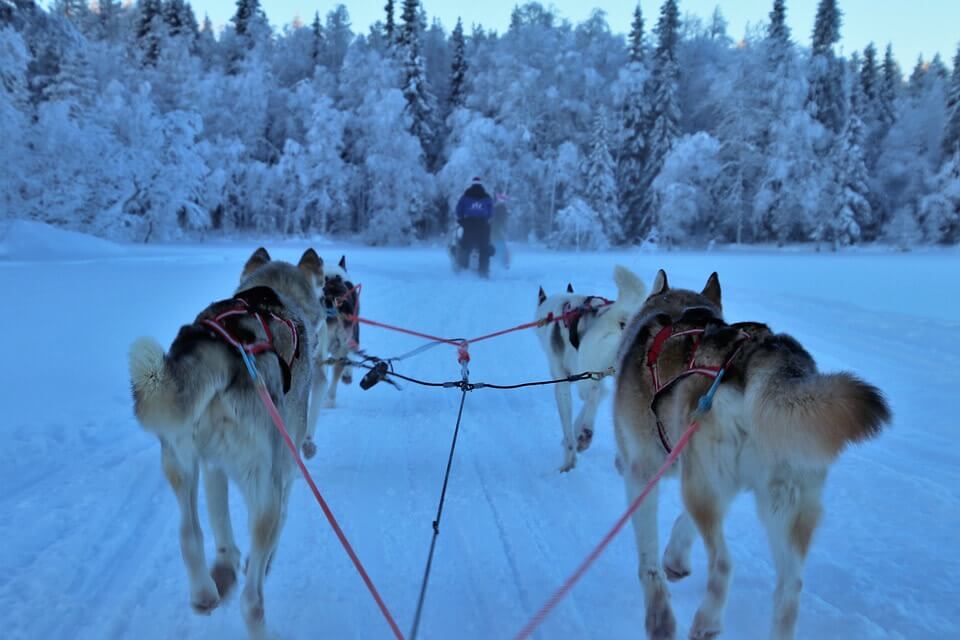Incentives are a key part of the meetings and events landscape, a powerful tool to motivate the workforce and reward employees for their effort. So what are planners in Asia Pacific doing to keep their incentive trips fresh and interesting?

Far-flung fun
“In the past five years, the biggest change has been the destinations that our clients are willing to travel to,” remarks Petrina Goh, Director, Singapore, CWT Meetings & Events. “People will sit on a plane for 12-15 hours if the destination is right. Before, the maximum was 5-7 hours. Now people will step outside their comfort zone.” Goh points to Eastern Europe and the Baltics as examples of places that Asia Pacific clients are increasingly looking at, instead of focusing solely within the APAC region for incentive trips. “The millennial generation is now taking over the workforce and is pretty well-traveled,” she adds, noting that CWT Meetings & Events has seen interest in Russia, Croatia, Finland, Malta. Though these places are more expensive than Asia-Pacific, companies are willing to spend more as long they get bang for their buck. “It’s also more impactful traveling further and to less-known places,” mentions Goh, with travelers experiencing novel scenery, aesthetics, language, and culture.
Goh’s comments echo a broader shift toward more travel from the region to newer parts of Europe that offer undiscovered experiences for Asian incentive groups. “APAC travelers are indeed venturing further into Europe and to less-trodden destinations,” says Tamas Hanyi, General Manager, APAC Region, Finnair. “We’ve witnessed year-on-year growth in visitors from Singapore to Europe, where the Nordics are a key destination for Singapore travelers in particular. Winter bookings to Lapland are already up by 33% this year. Experience is a new luxury and the best way for companies in Asia to incentivize their teams. We see it as a trend that will only increase.” From its Helsinki hub, the airline flies to cities across Eastern Europe and the Baltics like Dubrovnik, Prague, Tallinn, Budapest, Riga, and Vilnius. “Poland has seen an increase in awareness and travelers from Southeast Asia as well,” he adds.

Push the boat out
For Michelle Sargent, Director CWT Meetings & Events, Australia/New Zealand, emerging destinations are equally appealing for clients. “Australia-based clients are hitting on emerging destinations, bucket-list destinations, and money-can’t-buy experiences. We should be able to offer something on an incentive that a husband and wife or family couldn’t do on their own.” Some places she has arranged trips to include Egypt, Brazil, and Morocco. “These areas are perceived as being very far away, and maybe there is a safety risk involved, but we get the impression from clients that they are willing to push the boundaries if the trip is well organized by a reputable company and offers the highest level of accommodation and security.” One example of a trip of a lifetime that Sargent recalls arranging was in Egypt, a dinner for 120 people in front of the Sphinx.

Idealism and realism
But choosing a new destination to wow employees isn’t as straightforward as sticking a pin in a map. Any incentive trip injects idealism with a healthy dose of realism. Planners will always want to up the ante for the social or meetings elements of an incentive, but it’s important not to pitch plans that are too extreme, and to think in terms of the attendee experience. “Clients need something different beyond four walls. One client wanted to do something in remote Inner Mongolia for 150 guests,” says Goh. “One asked for dinner at the top of a building on a helipad, another to bring a Broadway show or museum into a dinner venue.” Balancing the “wow factor” with the budget and the practicalities of the destination and itinerary is key. At the same time, planners should have a feel for their demographic. “Taking a group in their 60s to a chic beach club in Bali may not be the best option,” muses Sargent.
For Asian travelers visiting undiscovered regions, the pitfalls are real. “Asia-Pacific for an Asian traveler is perceived as a safe choice. Even New York and London are considered common compared to some of Europe and the Baltics.” says Goh. Planners must consider the challenges and risks of opting for a new or unfamiliar destination, and do enough research on a destination before making a choice. This includes factoring in language barriers, infrastructure such as accommodation and public transport, general safety issues like robbery and pick-pocketing, as well as bigger threats of terrorism and the stability of the country. The issue of food is also fraught with complications. “Look at Asia-Pacific, the dietary preferences and requirements are more diverse than North America or EMEA,” explains Goh. “Here you have categorizations such as ‘Indian vegetarian’ and ‘halal’. The menu planning [team] in new regions might not be used to such large, varied incentives group and might have difficulty catering for them,” necessitating an external caterer.
Sargent has similar thoughts. “In countries that are evolving in terms of incentives, sometimes they are not fully equipped to take us on. Some places seem like they are 20 years behind. The destination might have exceptional hotels, beautiful food and people but can feel behind in terms of flow and safety and security. And sometimes they aren’t ready to manage incidents if they happen.”

Costs in check
Budgets are another key concern. Costs need to be kept in check and this requires meticulous planning, especially given additional airfare costs and the implicit assumption from attendees that planners will always look to outdo what they have done in the past. “You need to manage costs, confirm destinations and events well in advance,” says Goh. “You must do site inspections and book hotels well before other people come in and push up demand. If you confirm a trip one year in advance versus six months, you will get a cost savings of more than 15%.” This can be done even further in advance for events that occur like clockwork, perhaps even two years prior, potentially increasing savings further.
Another option to monitor costs is by calculating the choice of the location of an incentive, making sure not to visit a city when major events are taking place, for example. “We would avoid Japan, especially the strip of Tokyo-Kyoto-Osaka next year because of the 2020 Tokyo Olympics. Prices are up 30%. The same for the Dubai Expo. But the rates for 2021 for both drop because of all this inventory. In Beijing, the rates dropped 30-50% after the Olympics.”
Sargent notes that for the incentives that go farther afield, the planner might also cut out some activities or dinner on the second night, and introduce more free time, to rein in expenses.
But planners have started to look beyond just costs, with the view that offering the carrot of an exciting destination might pay off in terms of higher return-on-investment. “With some clients who’ve started taking their employees to destinations in Europe and the Americas, we’ve seen a trend of their groups getting bigger as more people are qualifying for the incentive trips,” says Goh. Post-event, planners should collect feedback from the attendees. Were they satisfied with the content, the meetings, the hotel and the food? “Ten years ago it was difficult to pin down any degree of success,” explains Goh. “Now you can consistently measure satisfaction with delegates. There are tools and data and analytics at your disposal.”


